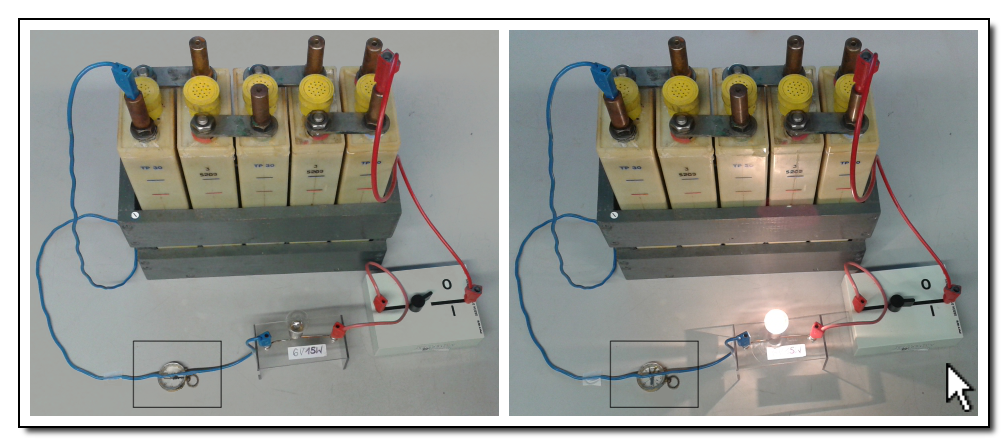A compass for current
Firstly, the electric circuit is built. The lamp is connected to the negative pole of the battery with the blue wire. The two red wires are used to connect the lamp to the switch and then to the positive pole of the battery. The switch is open. No electric current flows. Finally a compass is placed under the blue wire.
Roll the mouse over the picture to enlarge the compass.

|
Step 1: The switch remains open. No electric current flows. You can see that in the picture on the left. As expected, the compass points to the north (shown in the picture to the right), when the current is turned off.The electric wire runs in the same direction.
Step 2: Flip the switch. The current is now turned on by closing the switch. This situation is shown in the picture on the right. Watch the compass needle carefully! What happens?
Well done! The compass needle rotates. It does not point to north anymore. But why does this happen?
In the right picture you have seen, that the compass has oriented according to the current. The reason for this is that current creates a magnetic field around itself, which attracts the needle of the compass. Therefore a compass can indicate that a current is flowing. Do you think the needle moves again if you change the direction in which the electric current is flowing?
Impose a presumption first. Then, verify your assumption with an experiment.
What will happen, if the conducting lines are disconnected from the battery and connected again to the other poles, thus exchange the negative and positive pole?


